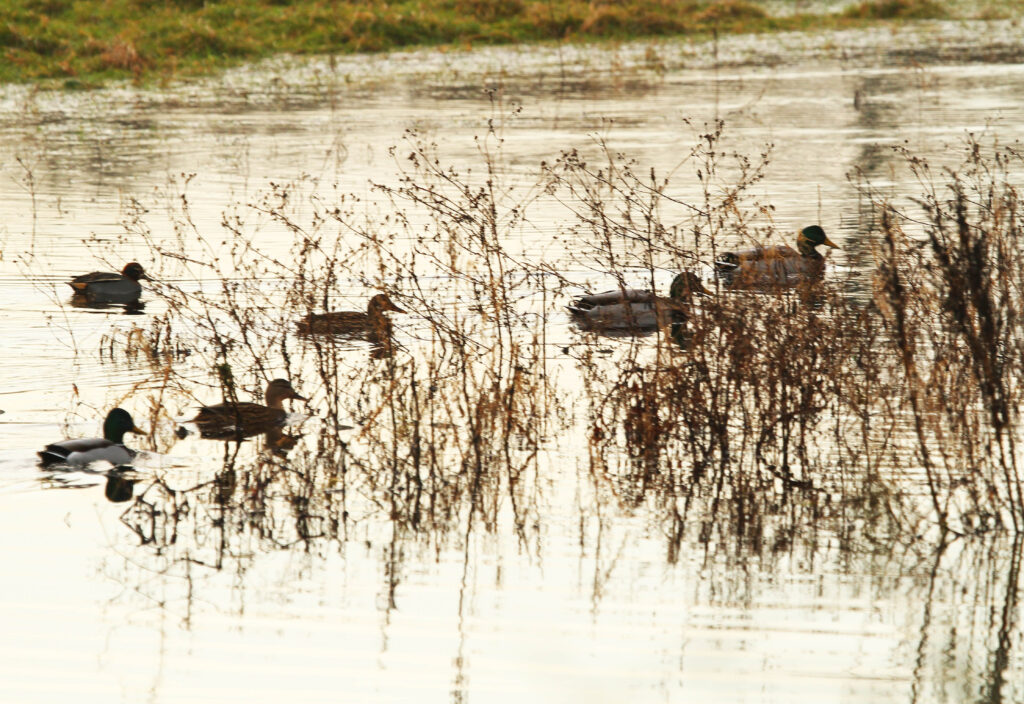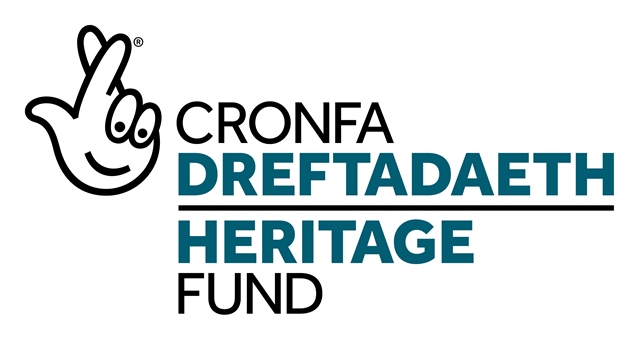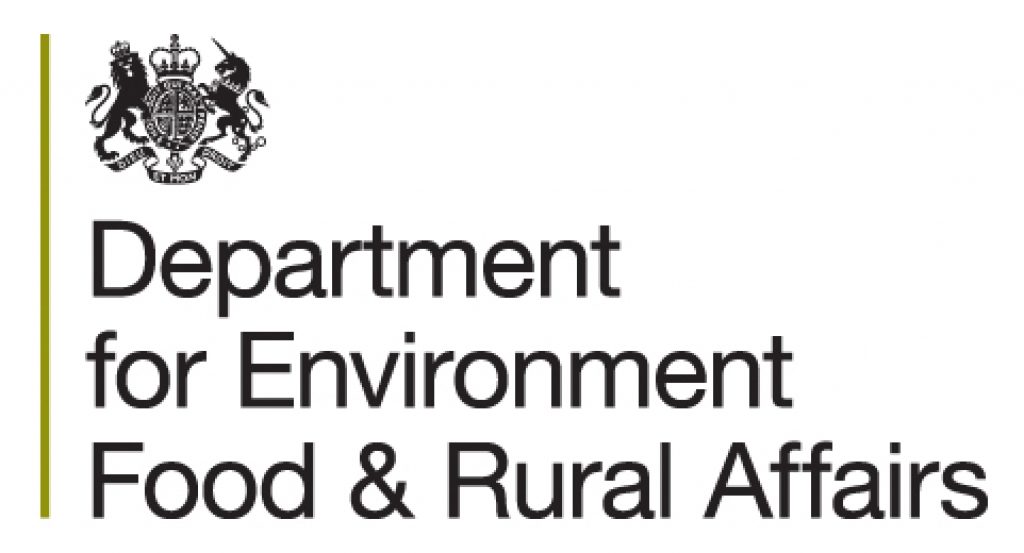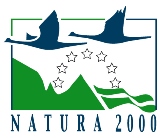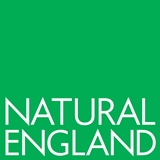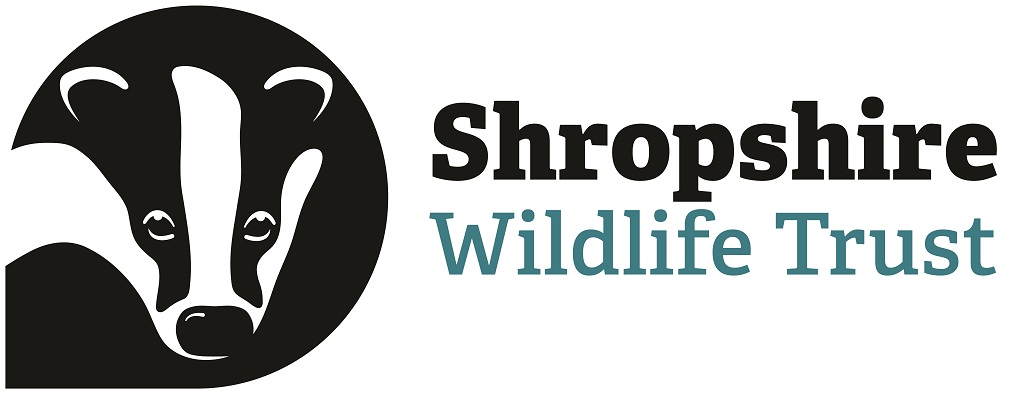Work Progressing at Shropshire Wildlife Trust’s Sinker’s Fields
November 18, 2021
Main photo credit: Alexander Sleigh
NOTE: This post contains a link to an external website.
Work is progressing at Sinker’s Fields wetland reserve, one of the best areas for wildfowl and wetland birds in North Shropshire. The works are being undertaken as part of the BogLIFE project to ensure that shallow surface water conditions can be consistently maintained across parts of the site during spring and summer periods.
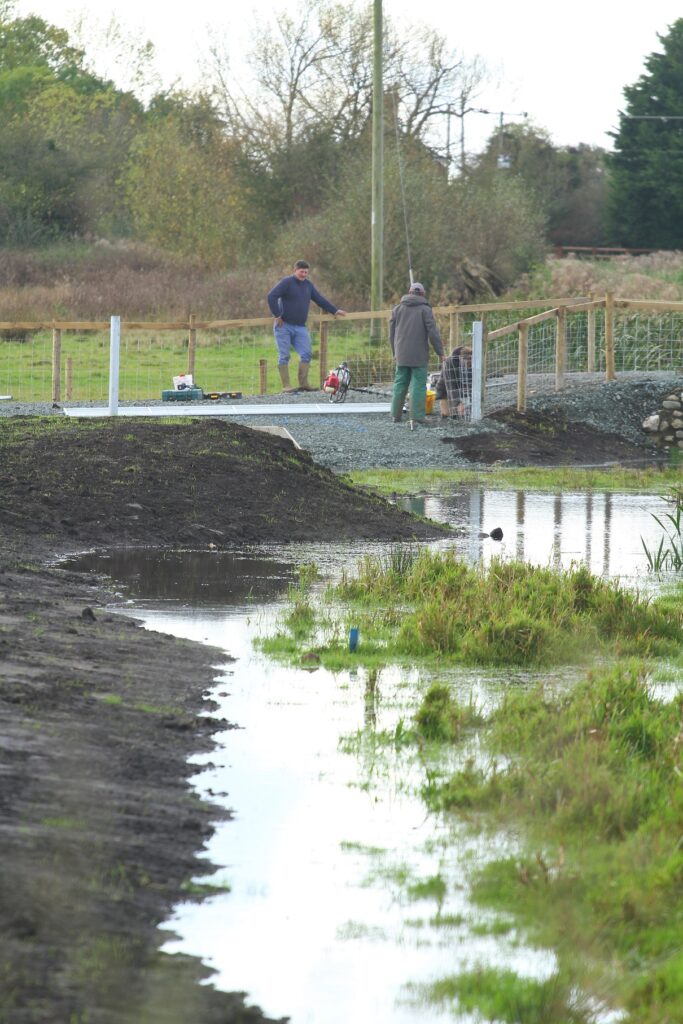
This will provide favourable habitat for waders and wildfowl, aid the development of wetland vegetation and improve carbon storage on land that originally formed the edge of Whixall Moss, called lagg habitat.
Historically, the land formed as shallow peat bog at the edge of Whixall Moss and peat soils remain, meaning this is an important marginal habitat for the Mosses. This type of marginal land has been eliminated from almost all British raised bogs, making these works of considerable importance.
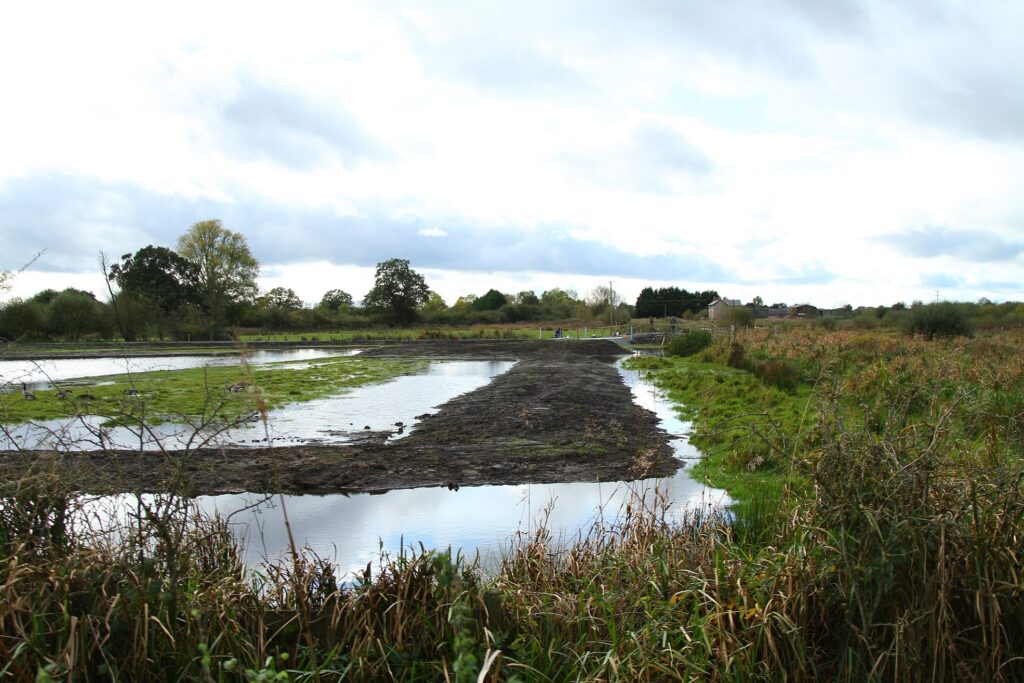
With the works being so new, the fields may look a bit unfinished right now, but the works are being done in a way that the landscape will take care of itself over the years. Over the winter and spring, reed beds and sedges on the bunds and pond edges will re-establish and cover the bunding.
The works being done include fencing the far perimeter of the site and creation of parking for two Blue Badge vehicles at the gate off Moss Lane. In addition, an accessible footpath to the Sinker’s Fields Hide has been laid down, as well as the concrete base for the hide itself. The hide will be installed over the winter; when it’s complete, access will be by key code, with the code provided by Shropshire Wildlife Trust on request.
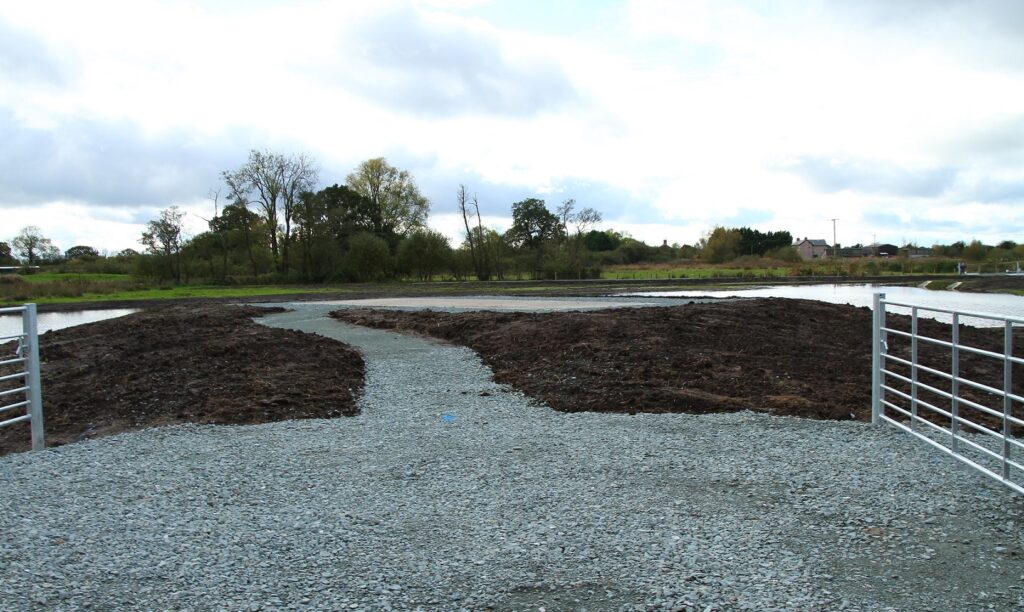
Sinker’s Fields are named in honour of Charles Sinker, one of the many people instrumental in working toward the restoration of the Marches Mosses in the 1980s and ‘90s.
The fields are home to birds throughout the year, including curlew and lapwing who visit the fields from their homes on the Marches Mosses, as well as Canada goose, mallard, coot and moorhen. Many more waders and dabblers spend the winter here after flying south from their homes in northern Europe. Birdwatchers have recorded sightings of plover, teal, shelduck, and widgeon.
Recently, a grey phalarope dropped by Sinker’s Fields as well. This wader breeds in the Arctic and is sometimes seen along coastal UK after large storms; it’s unusual to see one as far inland as Sinker’s Fields. You may know it by its American name, the red phalarope, so named because its breeding plumage is bright orangey-red.
You can read more about Charles Sinker and Sinker’s Fields on the Shropshire Wildlife Trust website.
Murmuration at Sinker’s Fields – please park thoughtfully.

In autumn, starlings often murmurate in the area, roosting in the deciduous trees along the edges of the fields and the Mosses. If you come out to Sinker’s Fields to watch the murmuration, please park at the Morris’ Bridge Car Park rather than on Moss Lane.
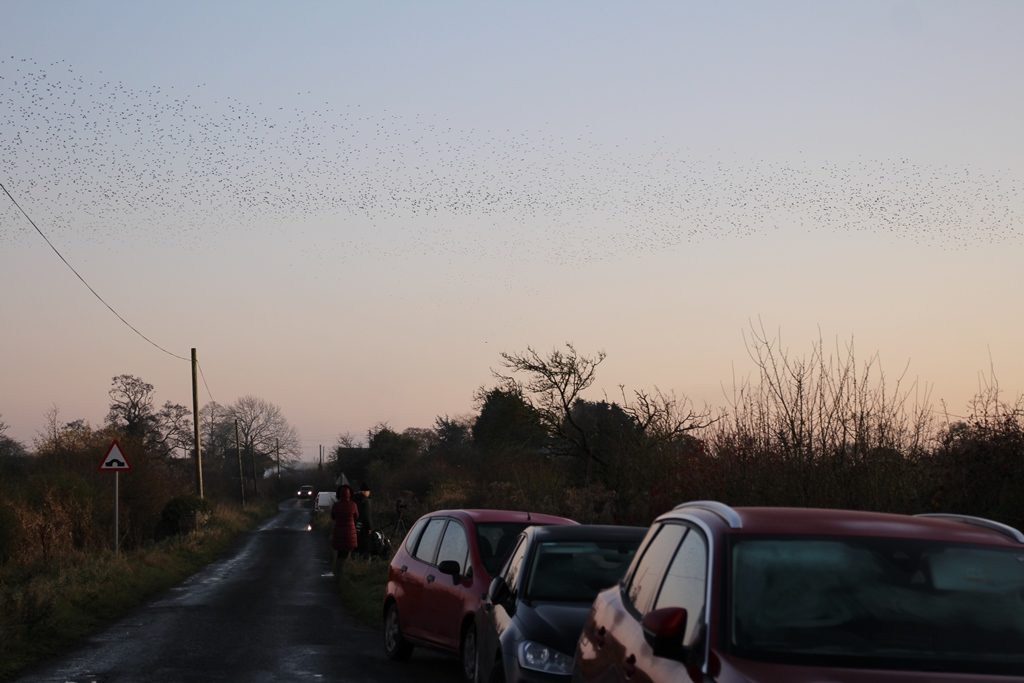
If the car park is full and you have to park on the lane, please do take care not to block our neighbours’ driveways and farm gates or the lane itself. It’s really important that we treat the neighbours around the Mosses with respect.
So please do visit Sinker’s Fields over the winter – and throughout the year. Watch this space for news of the hide installation and let us know what birds you’ve spotted on the fields – and the Mosses, too.

